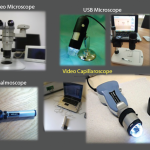How to Characterize a Disease
As part of his argument, Dr. Izmirly contrasted, “The description of rheumatoid arthritis preceded by 100 years or so the actual discovery and association of rheumatoid factor and later [cyclic citrullinated peptide] antibodies, but in MCTD the identification of the antibody actually shaped the description of the disease.”
Dr. Izmirly noted that U1-RNP antibodies are seen in 38% of patients diagnosed with SLE, 8% of patients with systemic sclerosis, 5.5% of patients with inflammatory myositis, as well as 0.2% of healthy women, although not necessarily at high titers. However, overlapping antibody positivity is not an uncommon situation in rheumatic diseases.
Interestingly, both teams used data on the impact of anti-U1-RNP antibodies to help make their case. Dr. Distler noted that U1-RNP antibody positivity is associated with a unique phenotype in patients with systemic sclerosis, one associated with increased inflammation and poorer prognosis. However, other patients do bear the more classic characteristics of MCTD, and looking at U1-RNP as purely a subset marker of another disease may miss those patients.11,12
In multiple areas of rheumatology, experts have debated how to deal with disease subsets. For example, disease course, outcomes and pathophysiology may vary somewhat between seronegative and seropositive patients with rheumatoid arthritis, and in some cases the two groups might be better separated out for research purposes. Similarly, SLE is known for its dramatic disease heterogeneity. In some cases, being more specific about emerging intradisease subsets may reveal clues to pathophysiology and targeted treatment.13,14

Dr. James
The challenge of defining such disease subsets has become even more complex with the advent of modern laboratory tools, such as genomics and machine learning. To help make her case that MCTD is better conceptualized as a disease subset of other rheumatic diseases, Dr. James shared different kinds of molecular data, for example, demonstrating similar immunotypes and serotypes between patients with MCTD and SLE, with most MCTD patients exhibiting an interferon signature, similar to SLE patients.15
Implications of Categorization
So should MCTD be considered a distinct disease entity on equal footing with its disease cousins like systemic sclerosis? Or might U1-RNP positivity be better thought of as a marker to stratify subsets in other diseases? In one sense, the distinction may be more of a linguistic or philosophical one, as much about the underlying pathophysiology is still unclear. However, practically speaking, the language used does have significant implications, as both teams argued, for both research efforts and current patient care.
